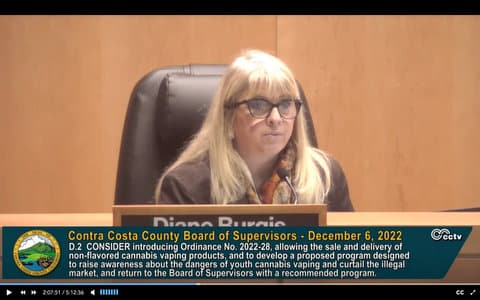
01 Oct The Marijuana Industrial Complex Comes to Richmond
Above:A flower on a Lemon Kush cannabis plant during an indoor grow. Credit: Flickr user eggrole; Creative Commons Attribution 2.0 Generic
Op-ed, David Schoenthal Published: October 1, 2017
Three years ago, I was on Richmond’s Economic Development Commission and was shown a list of vacant warehouses. We debated what would be the best types of business to attract to Richmond. Some said tech companies, some said health care and some said food manufacturers. No one at that Economic Development Commission said, “Let’s bring in marijuana cultivators.”
But with the advent of legalization, Richmond’s need to fill the holes of its budget shortfalls and the progressive-dominated City Council, there has been a quiet tsunami of marijuana cultivators using nearly every inch of warehouse space in Richmond.
In the last 20 years, San Francisco, San Mateo, Palo Alto and Oakland have all seen an influx of highly paid workers due to the influx of jobs requiring employees with specific skills. The technology industry has changed the face of the Bay Area just like the Gold Rush changed California and WWII changed Richmond, with a massive influx of people coming to the area.
In Richmond, gentrification raises the same red flags. Homeless, human rights organizations and progressive groups argue that gentrification displaces people living below the poverty line and that we need policies like rent control to stem the tide of the rising costs of places to live.
But with all the focus on the tech industry, I have heard little to no discussion about the types of jobs marijuana cultivators bring to the community. While I am sure there are some very talented home growers, these enterprises are large, well-funded and, like the technology industry, require a highly skilled work force.
Where will these new workers go to live? Richmond has not been able to create much, if any, new housing in the last decade, let alone affordable housing.
Richmond currently has only one project for 200 units currently in the pipeline that meets the affordable housing criteria for moderate low income. This project would focus on teachers, firefighters and police officers.
As part of the equation, Richmond needs to bring on more housing of various types to lessen the overall burden on the housing market.
Meanwhile, progressives in Richmond are setting the table for the marijuana industrial complex to have a community bank to place their money.
A community bank has a long list of benefits, but they don’t include guaranteeing anyone a job from the new marijuana cultivators who will be the bank’s new clients. This new industry and bank are not going to stop displacement of the low-income earners. This new industry is not providing any guarantees that they will hire union workers or allow for unions to be formed in their facilities. In fact, without being highly conscious and intentional with specific plans of what the marijuana industry will provide, we are doomed to make the very same mistakes made by the technology industry.
We are already seeing the first signs of how the marijuana industrial complex can begin to push people out. We have lost small businesses like Jered’s Pottery which recently moved to Emeryville, and Jane’s Inc. I know of other businesses that want to grow and stay in Richmond but can’t because there just isn’t enough space here.
The current City Council has not offered any viable strategic plan for allowing the creation of new buildings for businesses. How many do we need based on population? What types of housing do we need? Where do we need them? When do we want to have them completed? These are just a few of the strategic questions we need to have in a three, five and 10-year strategic plan for housing. A general plan is great to have as a larger vision but within that general plan there ought to be some strategic plans for housing and economic development.
The technology landscape has rapidly and dramatically shifted our economy away from manufacturing and has left people in the Midwest holding an empty bucket. It has created a massive chasm between the haves (highly skilled technology workers) and the have-nots (manufacturing workers).
Be careful. What seems like a good idea may not be the case. We need to be far more thoughtful and strategic about how we work with the new marijuana industrial complex if we are truly looking out for the most vulnerable in our society. The tide is rising, and with it we must be able to lift all boats.







No Comments